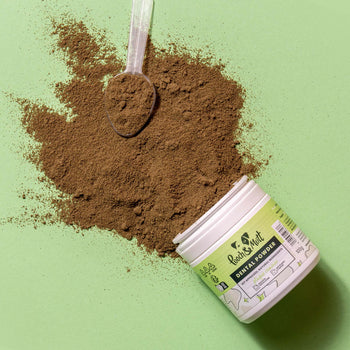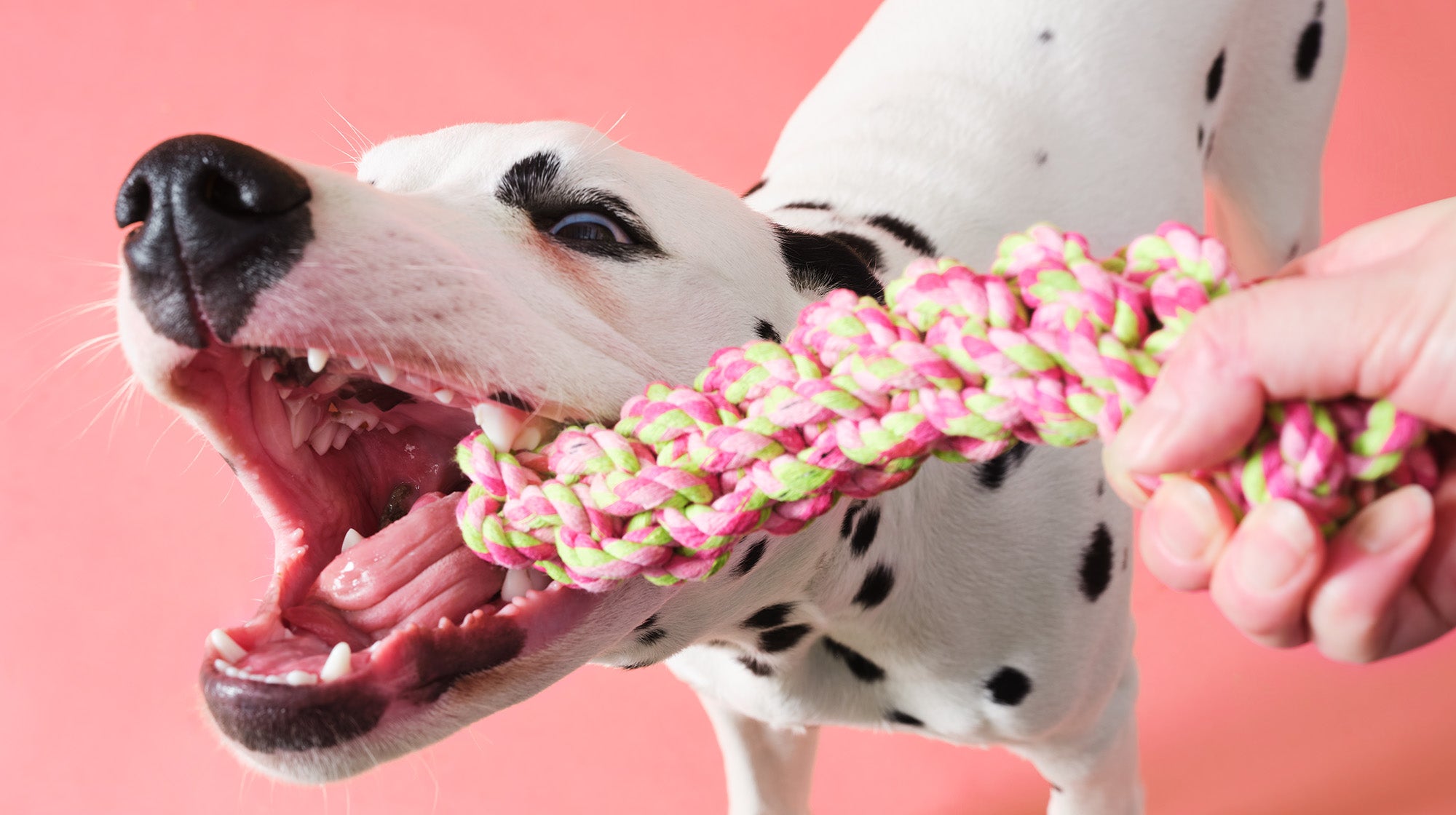
FREE UK DELIVERY ON ORDERS OVER £39.99
Dogs have 42 teeth when they’re adults, and 28 baby teeth as little pooch puppies.
Just like humans, dogs lose their baby teeth and grow almost twice the amount of adult ones, which need regular dental care to keep as healthy as possible as your dog ages.
In this article, we’ll go into detail on a dog’s teeth and what they’re for, along with some helpful tips on how to look after that winning smile.
If you opened a dog’s mouth, you’d see up to 42 teeth of four different types. Just like humans, dogs have incisors, canines, premolars and molars which each have specific functions.

When you take your dog to the vet for a dental check-up, they will use Canine Dental Charts to assess your dog’s oral health (Dental Grading). Your dog’s teeth are numbered from 101 - 410: from the upper right and upper left, to the lower right and lower left of the mouth (similar to how a dentist identifies our human teeth). Each tooth is individually checked, and the gums and gumline are also assessed.
With these dental charts, your vet can analyse your dog’s current dental health, advise any necessary treatment for your pooch, and/or warn you about any problems that may develop with their teeth and gums in future, such as gingivitis or tooth mobility.
If you get your dog’s dental health graded regularly, it allows the vet to identify changes in your dog’s mouth over time, so you can stay on top of issues and potentially save their teeth.

Let’s delve into the teething process, and the differences between puppy and adult dog teeth.
Puppies are born with empty gums just like human babies, and quickly grow 28 baby teeth, or milk teeth, all of which should have cut through by 6-8 weeks of age. These teeth don’t stay for long - from around 12 weeks, a pup’s baby teeth will go loose and fall out, one by one, to make room for their adult teeth.
Puppies lose all 28 of their baby teeth to make room for their adult dog teeth. By the time they’re around 6-7 months old, all their baby teeth should have fallen out and 42 adult teeth have cut through in their place. Occasionally a dog’s baby teeth may not fall out, which can lead to overcrowding when the adult teeth come through - definitely refer to your vet if you think this may have happened.
The puppy teething process should be all done by the time they’re 6-7 months old. At this point, all their baby teeth have fallen out and they have all 42 adult teeth.
Older dogs losing teeth isn't a normal part of ageing and is often a sign of underlying health problems and definitely warrants a vet check. Common causes of tooth loss in old age include:

Keeping up with your dog’s dental health throughout their life is super important to their overall health. Conditions such as gingivitis, when untreated, can lead to all kinds of other issues - such as bone loss, where even your pooch’s jaw and facial structure are impacted; or even dangerous kidney and respiratory failure, as bacteria from the infected gums enter the bloodstream.
Look out for the common dental issues below so you can report to your vet, improve dental care for your dog, and nip these issues in the bud before they get worse.
Your dog can’t communicate when they have a toothache, so it’s advisable to know what dental issues look like so you can report to your vet accordingly. The sooner you get a dental problem under control, the less of a negative impact it’ll have on your pooch.
Dogs can be a nightmare when it comes to teeth cleaning - many don’t like it! Try to get your dog accustomed to having their teeth cleaned in some way, even for a few seconds, because neglecting this important part of their physical health can have nasty consequences down the road.
This can start when their puppies as the earlier you introduce them, the easier it will be for them to become accustomed to it. To help you out, check out our nifty step-by-step guide to cleaning your dog’s teeth.
Keeping hold of your dog’s dental records is highly recommended, especially if they’ve had procedures or issues with certain teeth. This way, you can monitor if certain issues have worsened, and take them with you for reference when you have a dental check-up for your dog.
Dogs love to chew on things as it calms them down and relieves boredom - in fact, there is even evidence that chewing releases soothing chemicals in your dog’s brain!
Dental dog chews have the double benefit of also cleaning your dog’s teeth and massaging their gums (like a natural toothbrush) and help towards improved dental health.
Keep on top of your dog’s health as they age by feeding them a well-balanced diet of healthy dog food made with whole proteins, gentle, digestible carbohydrates and veggies, and consider switching to wet food if dry food is too hard on their teeth. Supplements for dogs will help, too - such as salmon oil or probiotics - as well as regular veterinary check-ups.
Not all dogs have 42 teeth - smaller dogs or brachycephalic breeds (those with flat-faces such as Pugs, French Bulldogs etc) may have slightly fewer on average due to their shorter jaws. In general, most adult dogs have 42 teeth.
All dogs should have around 42 teeth, however smaller dogs can have fewer than this due to their small jaws. There isn’t a set number of teeth that smaller dogs have - it’s just common for them to have less than 42 due to their physical makeup.
Yes, dogs grow 28 baby teeth, or milk teeth, as puppies, which fall out to make way for their adult teeth.
Yes, dogs can survive on only a few teeth, however it isn’t comfortable for them. They may find it a little strange at first, but they will find it much easier to eat than those with advanced dental disease and sore mouths. However, loss of too many teeth (due to periodontal disease, bone loss or jaw damage, for instance) may make it much harder for them to eat and close their mouth. They may need manual feeding from their owners and very soft food. The structure of their face and skull also might change.
Dogs can lose all 28 of their milk teeth as puppies, but any adult teeth they lose won’t grow back. How many teeth they might lose as an adult dog depends on their health and level of dental hygiene.
Check out Pooch & Mutt’s nutritious dental chews and treats for dogs which act as a natural toothbrush for your dog’s teeth - in all-natural flavours such as vegan peanut butter, spirulina & mint or hemp & sage.





Never miss a treat!
Subscribe to our newsletter and get blog articles amongst other treats delivered to your inbox

Comments (0)
Leave a comment